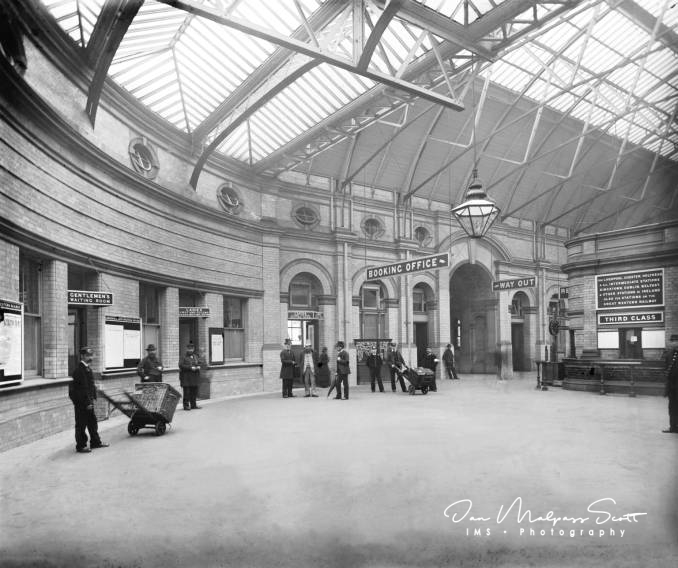Manchester Exchange Station was a railway station located immediately to the north of Manchester city centre. It served the city between 1884 and 1969. The main approach road ran from the end of Deansgate near Manchester Cathedral, passing above the River Irwell and Chapel Street; a second approach road led up from Blackfriars Road. The bulk of the station was located in Salford and the 1929 extension of Platform 3 to the east of the Irwell was in Manchester.
Construction and opening
The station was built by the London and North Western Railway (LNWR) and opened on 30 June 1884. The station had five platforms with Nos. 1 and 2 being bays and Nos. 3, 4 and 5 being through. Platforms Nos. 4 and 5 were reached by a footbridge from near the station entrance. The opening of Exchange allowed the LNWR to vacate Manchester Victoria station to the east, which it (and its predecessors, including the Liverpool and Manchester Railway) had shared with the Lancashire and Yorkshire Railway (and its predecessors) since 4 May 1844. From 16 April 1929, Exchange had a platform link with the adjacent Victoria, when an eastward extension of platform No. 3 over the Irwell bridge was opened, meeting Victoria’s platform No. 11, thus creating Europe’s longest platform at 2,238 feet (682 m); it could accommodate three trains at once.
Services
Exchange station served Liverpool Lime Street; Huddersfield; Leeds; Hull Paragon and Newcastle Central; also Warrington Bank Quay, Chester and North Wales. Local LNWR passenger trains operated via Walkden to Bolton Great Moor Street and via Tyldesley to Wigan North Western.
The station originally provided alternative services from Manchester to London Euston. Between 1884 and 1943, the Great Western Railway operated a competing passenger train service from Chester General station via Frodsham, Warrington Bank Quay and Eccles to Manchester Exchange.
World War Two damage
The station suffered hits by several German incendiary bombs during the Christmas 1940 Manchester Blitz. On 22 December, the station roof was severely damaged, portions of which were never replaced. Fires took extensive hold on the building which could not be re-opened for passengers until 13 January 1941.
Closure
The station was closed on 5 May 1969 and all remaining services were redirected to Manchester Victoria.
Despite closure, the station remained operational for newspaper trains until the 1980s. Manchester produced several ‘northern editions’ until the newspaper revolution. The nighttime operation was very busy with several trains being loaded and readied for departure to various trans-Pennine destinations (Halifax / Huddersfield / Leeds / York etc.).
After many years of remaining relatively intact (with trains still running beneath the train shed until the track layout was redesigned), it continued to operate as a car park for some years.
As part of the Manchester to Preston electrification programme (2015), the site has finally been largely razed to the ground.


